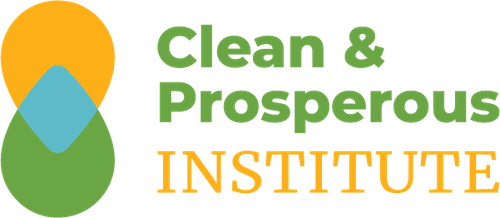When French-Canadian fur trapper Simon Plamondon traveled from Québec to the wilds of the Pacific Northwest in 1820, he probably didn’t envision that 200 years later descendents of his Cowlitz Tribe hosts would travel with the Clean & Prosperous Institute to visit Québec. And he certainly didn’t think that fur trade would be replaced by carbon trade.
When we ventured up to the Province of Québec, we were joined by the General Council Chairwoman of the Cowlitz Tribe, Patty Kinswa-Gaiser. After Huron-Wendat Nation Grand Chief Rémy Vincent welcomed us to the Nionwentsio Territory, Chairwoman Kinswa-Gaiser said,
“This year marks a milestone in our collective journey that began centuries ago, when a young citizen of Quebéc became an historic icon in our Cowlitz Tribe. A Cowlitz bride Thas-a-Muth and a Canadian, Simon Plamondon, still in their teens, became parents to children whose descendants are still among the leadership of the Cowlitz Tribe.
As we work side by side with the leaders and citizens of Québec, we are taking a significant step forward. This step is one of understanding, respect, and partnership—a step that acknowledges the importance of honoring the rich heritage of both the Cowlitz and City of Québec – we are cousins, after all.”

Linking our Washington state emissions-allowance market with those of Québec and California was the focus of briefings we received during our visit to Québec City.
After Québec’s Minister of the Environment and the Fight Against Climate Change, Benoit Charette, described the Province’s commitment to a green economy, Harold Côté, Director General in the Office of Climate and Energy Transition told us the government sees climate action as an engine (a clean engine) of economic development – and he said that their most important tool is the carbon market.
“Linking to Québec’s Carbon Market” was the title of Onil Bergeron’s talk. Onil is Senior Strategic Advisor, Emissions Data and Carbon Regulation, and he shared the results of Québec’s Cap-and-Invest program at the 10-year mark:

He compared the carbon tax that Canada introduced in 2006:
- Provides uncertain GHG emissions reduction with price certainty
(the government sets the price)
…to the Cap-and-Invest program that Québec introduced in 2013:
- Provides certain GHG emissions reduction with price uncertainty
(the market determines the price)
Bergeron shared Québec’s Climate Action Dashboard that’s central to the transparency promised when their Cap-and-Invest program was implemented. Similar metrics of performance may be tracked in Washington. The Washington State Department of Ecology has started new rulemaking focused on reporting requirements for state agencies that receive and use CCA auction revenues to fund various climate programs, projects, and initiatives across the state. From this information, Ecology must compile an annual report to the Legislature that shows where funds were spent and, for decarbonization projects, the greenhouse gas reductions they achieved.
Onil Bergeron described Cap-and-Invest as “a game-changer for climate and the economy”, as it is “robust and flexible, offering choices to reduce emissions at the lowest possible cost”. He went on to say that linking Québec’s carbon market with California’s was “a no-brainer. The bigger the market, the more efficient.”
Earlier we wrote about the efficiencies of linking with California. The same benefits hold true for linking with Québec.
The Environmental Defense Fund writes,
“Washington, California and Québec have a lot to gain from linkage. It can drive deeper cuts in climate pollution, lower prices and increase the stability of the carbon market. The programs in these jurisdictions are already aligned in the central ways needed to function as a linked market — but to unlock the greatest benefits of linkage, leaders need to align key aspects of these carbon markets in their respective processes.”
Resources for the Future writes,
“Linking has two key benefits. It reduces the cost of achieving Washington’s climate goals and broadens the state’s influence in advancing climate policy beyond its borders. If Washington links with other jurisdictions in a common effort to drive emissions reductions, it will legitimize and enable efforts to implement carbon pricing and companion regulatory policies to reduce greenhouse gas emissions elsewhere. Linking would substantially enhance the rigor, influence, and durability of Washington’s climate policy efforts. The benefits of linking would accrue to all three jurisdictions, but Washington’s newly formed carbon market would especially benefit by boosting its stability and the influence that its leadership can have throughout the nation and internationally.”
In order to link markets, regulatory and governance mechanisms must be aligned. The Washington State Department of Ecology is currently evaluating a number of considerations and reviewing public input prior to making its recommendation.
Not much fur gets traded between Washington and Québec these days, and we look forward to the day when not much carbon gets traded. But in the meantime, a common market for emission allowances can help both Washington and Québec transition to a carbon-free (and fur-friendly?) future.
